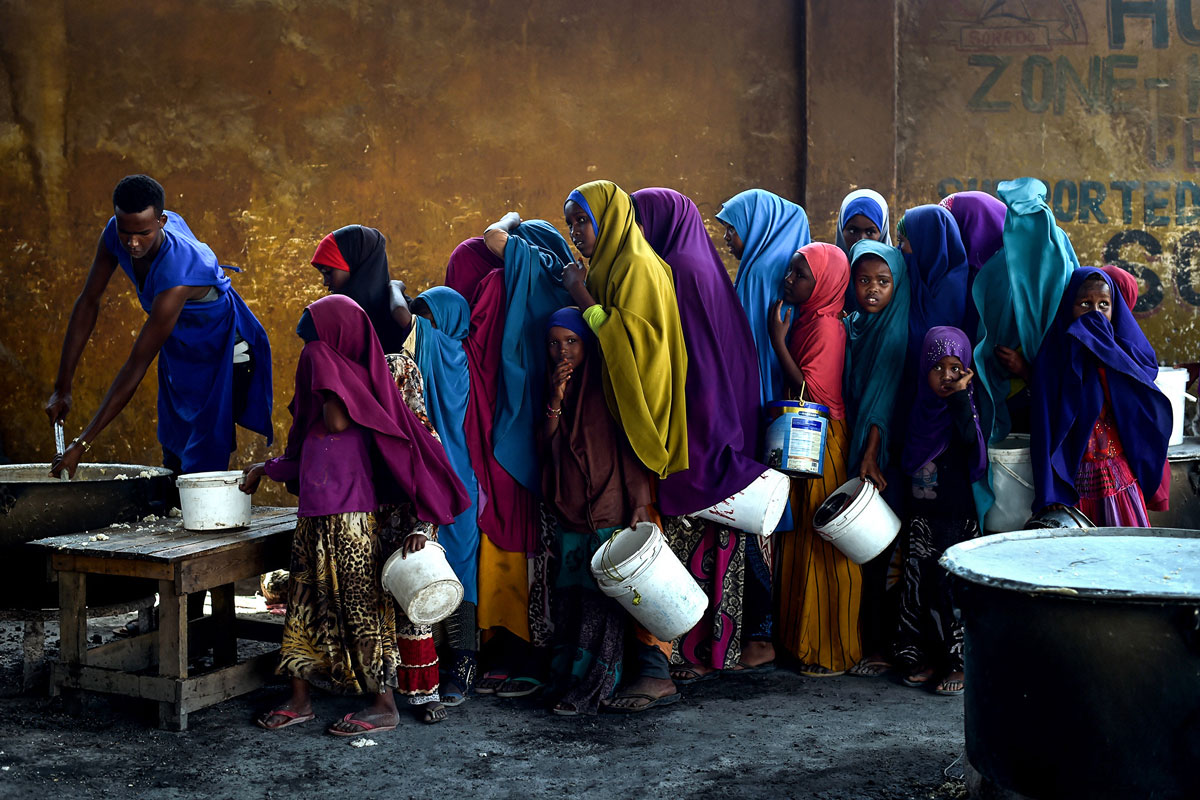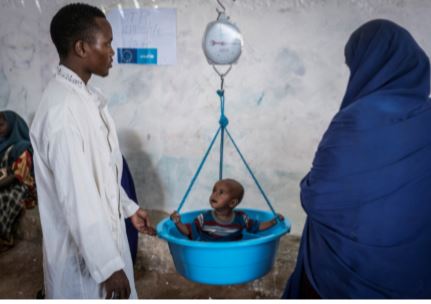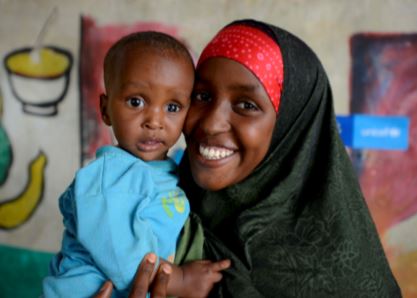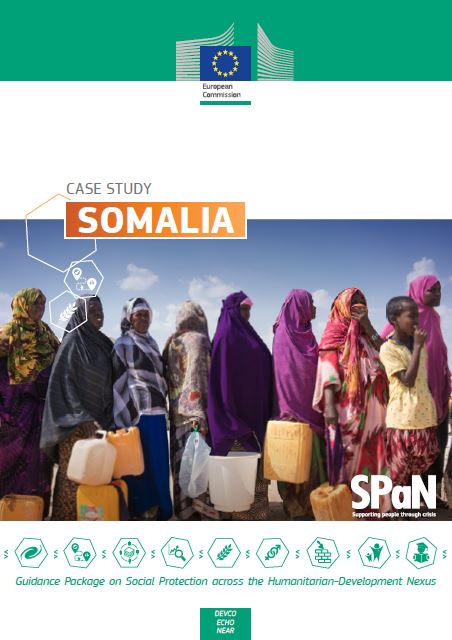SPaN (2019) Case Study: Somalia

Between August and October 2017, the initiative and ASiST assigned Social Protection specialists to identify opportunities to support a transition from current humanitarian assistance to a social assistance approach in Somalia. The outcome was a three-year roadmap for EU DEVCO and ECHO field office staff.
Somalia is a fragile state beset by drought, conflict and internal displacement for more than 30 years. While recent progress is considered generally positive, political dynamics continue to be volatile and institutional capacity at all levels is low. Governance arrangements between the Federal (FGS) and Member State (FMS) levels are variable. The 2017 Recovery and Resilience Framework (RRF) acknowledges these challenges and emphasises the importance of working with Government institutions.
Case Study Somalia (PDF)
The situation in Somalia remains extremely complex and volatile, requiring large-scale direct humanitarian intervention.The aid architecture for Somalia is generally considered complex and fragmented, although the degree of this complexity and fragmentation changes over time. While some aid agencies are now based in Mogadishu, most donors and senior UN and NGO staff remain based in Nairobi. Access to Government and implementing counterparts remains limited.
In spite of improvements in coordination, harmonised approaches remain challenging within the wider humanitarian and development community. While channelling resources for social protection through Government system might potentially improve state systems, delivery by international implementing partners is considered a lower risk. However, this does little to build capacity in Somali institutions, causes resentment and does not account for the risks and long-term effectiveness of not funding through Somali channels.
Somalia currently has no formal national safety net provision, although there is considerable informal household level support through remittance transfers. These remittances may reach up to 40 % of the population, whether regularly or occasionally, although remittances are unequally distributed in Somali society. Humanitarian aid is impeded where access is restricted and is subject to cyclical shortterm fluctuations. Moreover, targeting of marginalised and minority populations, as well as monitoring practices, have been extremely problematic.

Gains in effective planning, financing and coordination of a sustainable social assistance programme can best be made through closer donor collaboration. Working in parallel with a range of initiatives to support the Federal and Member State governments, a “safety net programme in the short term paving the way to a social protection approach in the long term”, with the vision of a Government owned social protection system is proposed as the long-term objective.
|
This case study is divided into five parts: Scene setting What it might look like Summary of assessed response options What happens next EU role in facilitating progress |
A safety net approach is not equivalent to social protection, but merely one component in a broader social protection approach. As far as possible a long-term developmental approach would support and strengthen Somali institutions and systems. This moves away from direct delivery outside the government and towards meaningful consultation, participation, and identifying roles in project implementation for the government.
It is recognised that involving the Government more meaningfully is challenging, but avoiding ways to do so is increasingly untenable. The foundational principles of a national system are summarised as follows:
- Safety nets provided by the international community are government owned but not necessarily government implemented;
- Assistance must be administered in such a way as to build the social contract by being rooted in Somali social perceptions and traditions;
- Planning and implementation should not occur independently of an agreed national framework but contribute to an evolving national system;
- If cash assistance is provided in a predictable, long term and sustainable manner, it achieves greater impact and is more cost effective;
- The end point should not be graduation from support, but graduation from one kind of support to another kind of support, while continuing to ensure a safety net for those who slip back and need help; and
- In line with the major covariate risks facing Somalia, i.e. drought and conflict, assistance needs to be able to scale-up and down in line with stresses.

The Somalia case study was produced as part of an assignment supported by the initiative “Guidance package on social protection across the humanitarian-development nexus” (SPaN). The Somalia road map has been presented at the International Conference on Social Protection in Contexts of Fragility and Forced Displacement that took place in September 2017 and at the Info Point Lunchtime Conference “Towards Shock-Responsive Safety Nets: the case of Somalia” in July 2018.
Visit the Guidance Package´s community page for a full list of SPaN´s studies.

Log in with your EU Login account to post or comment on the platform.